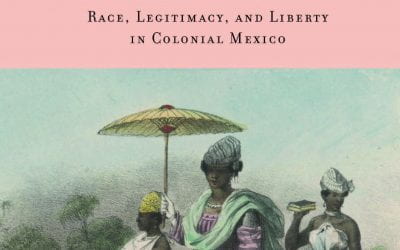What a Small Garden Can Teach Us
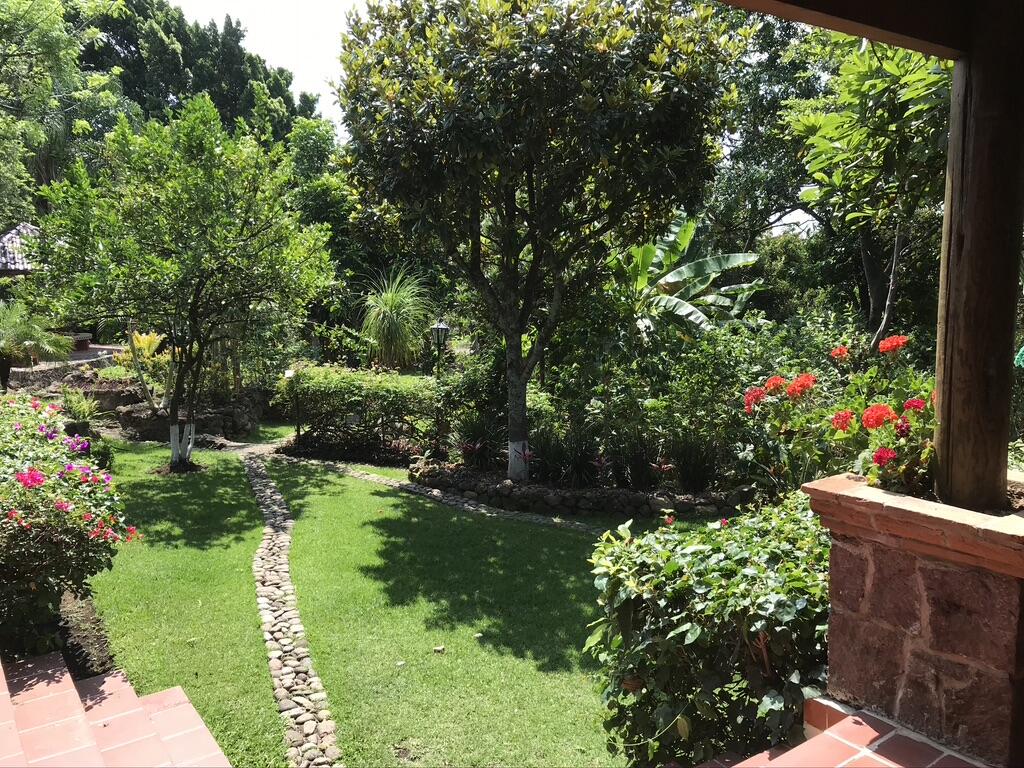
During the Covid-19 pandemic, many people started home gardens. A small gesture, but one that could not come at a better time, for it is becoming more and more obvious that industrialized farming is at least part of our problems, if not the root. Also, confinement came to Mexico exactly as spring began, so those who planted early on may now harvest zucchini, green peas and cilantro leaves.
I am no botanist, and have a tendency to miss the forest for the trees, but not so much that I cannot describe what is plain to see, and even draw some simple lessons. The tallest tree at my mother’s house in Malinalco is a mamey. Lush and big-leaved, the tree bears fruit all year round. In many sizes, these mamey—fleshy fruit with brown skin— do not hang but stick directly to the branches, maturing long months to acquire the great amount of energy they bring in both fat and sugar content. That is why the tree appears to be always full, but with time we have learned to harvest its fruit only every other year.
Though very large —an institution— it requires a lot of care. First, a Virgen de Guadalupe mounted on its trunk to stop the construction crew from cutting it down when the house was built, almost 40 years ago. Also, parasitic vines must be torn off, and it must be relieved of the burden of its fruit when finally ripe. When a mamey falls to the ground it makes a racket, and the panting dogs come running through dry leaves and branches, ready to lick its meat and spread its stone and waste throughout the plot.
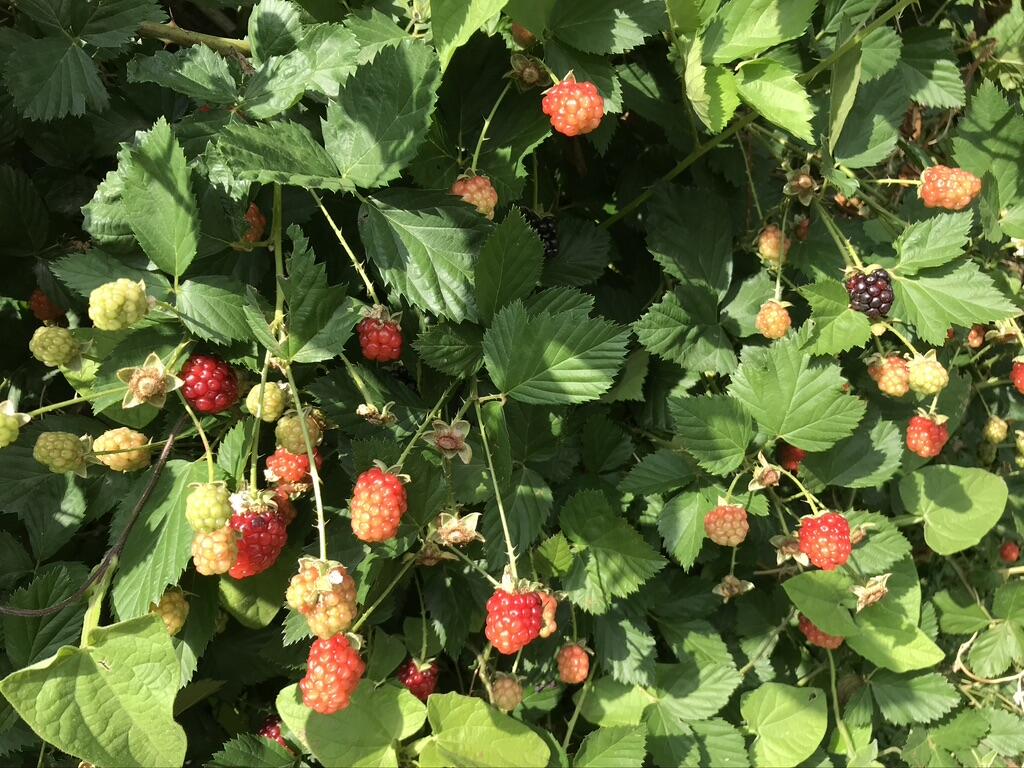
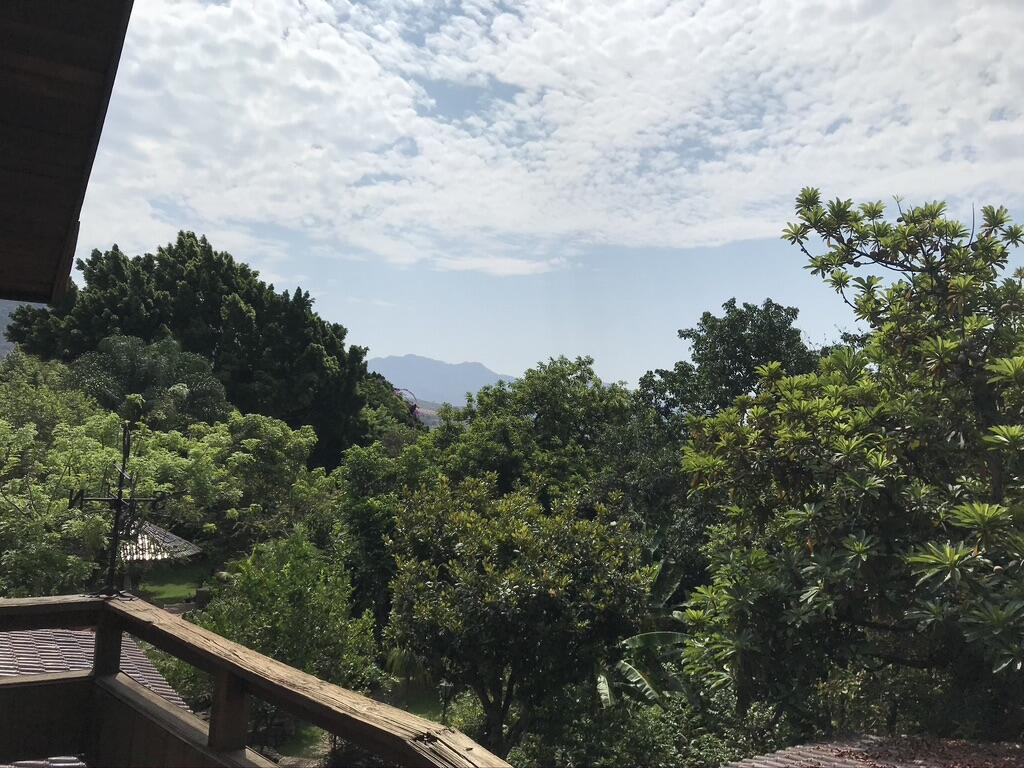
Fruit falls constantly; zapote negro, green and heavy, are also very loud when falling. Though a smaller tree, zapotes also have big, avocado-like leaves. Their fruit ripens suddenly, and its thin skin can easily rip to uncover its black sugar within, which invites all sorts of worms that fall with it to smash on the ground, much like mud. This nutritious element, and the many flowers, attract many more insects. Sometimes it bothers visitors, but I assure them it’s a good thing because insects bring that many more birds.
Home gardens are seldom neat in a conventional way, so at the foot of this tree there is a blackberry bush, also perennial. Straight lines are meant for machinery, neither for human arms nor for vegetal symbiosis. Tangled, the thorny bush will pierce the child who picks its raspberries for breakfast —I eat the fruit with yogurt— as a gentle reminder to take only what is needed.
The plot I describe is not very large, less than a small city block, but it contains enough trees of sufficient age to yield fruit throughout the entire year. This we owe to my mother, who planted and cared for this orchard for 30 years—directing and trimming branches, loading the heavier trunks with orchids, weeding—with the help of Don Félix, gardener and friend. They were both careful with the plants, and boastful of the first spring apricot. A worker-employer relationship is kinder, and farther away from the violence of exploitation, when the joy of honest work is shared.
Mornings we drink our own coffee, thanks to thin but incredibly productive little bushes that grow in the shadow provided by the mamey—the institution—and a bougainvillea. I have not relied on any other coffee for decades. It can be bitter, especially when over-roasted, but I have learned to tame that with the sweet frothy milk of a cappuccino. Afternoons we make agua de guanábana—another fast-ripening fruit of April and May—and for a couple of weeks a year, when there is tumbo (a type of passion fruit) that my mother brought from Santa Cruz, the Bolivian rain-forest, we toast to her by having a pisco-sour. Only instead of regular pisco we use the Andean Singani, made exclusively with Muscat of Alexandria.
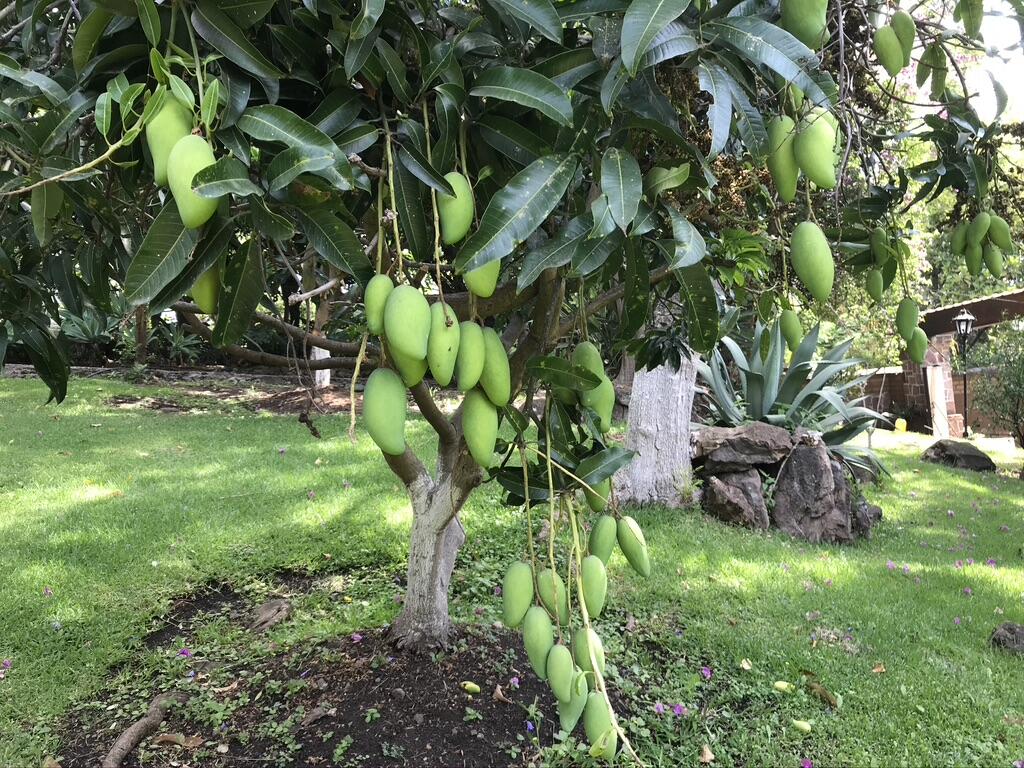
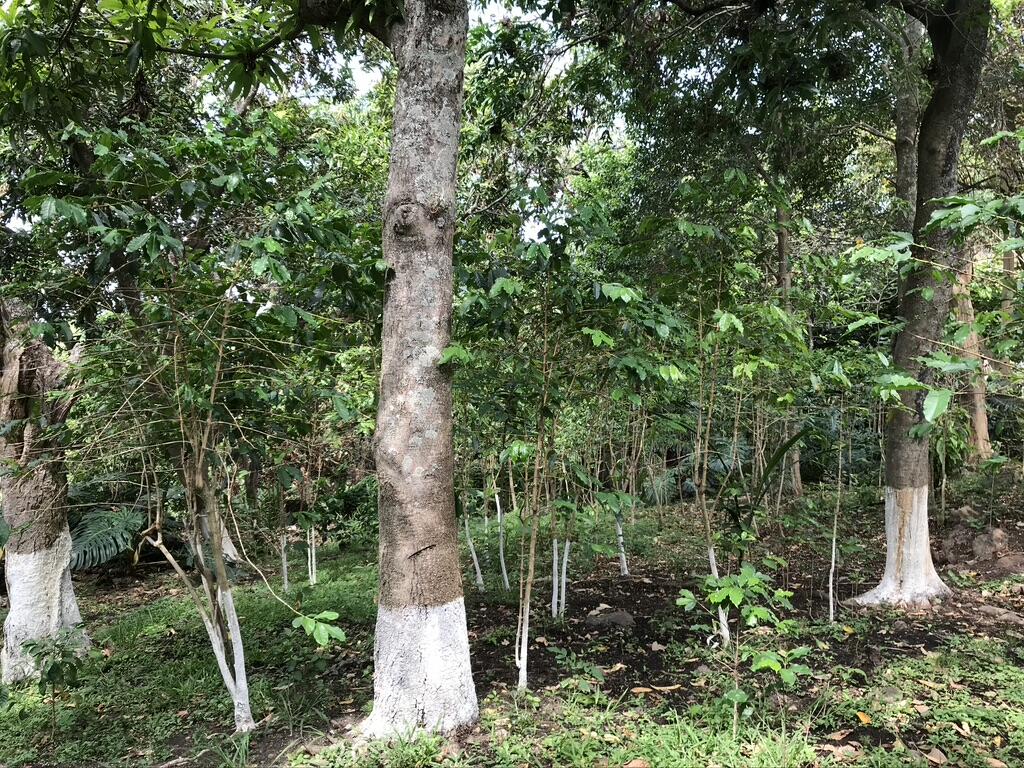
We coexist within this garden, thus honoring our roots and also the land we have come to. As I write this, the beginning of the rainy season, the view is not of that tender and luminous spring green but of a mature and thick green that slightly darkens the field. Rain and wind knock down fruit, leaves and branches, fallen life that must be collected and taken to the lower ground —by the fence— where it serves as compost. This remains among the greatest miracles of an orchard, to witness how fallen leaves, twigs, and rotten fruit soften up and mush until, with the help of earthworms, bird droppings and other, unseen micro organisms, they turn into soil. Decay is part of life, as the environmentalist poet Wendell Berry is bound to notice, and of it comes a dark, rich and fragrant earth, distributed among trees as necessary. I think so too society must regenerate, breaking down and reforming ideas, so as to keep culture alive. A well-managed garden or farm must include a full circle, going from birth to maturity, death and decay, to be a healthy system.
Though complete, no garden can exist isolated. When it isn’t rainy season we can water it thanks to the apantle (an irrigation canal) that runs through the plot, and which gathers water from subterranean rivers formed by the many hills that surround Malinalco. This has brought about something that seems inevitable of small-scale agriculture: being part of a community. We must attend water-meetings with our nearby landowners, both up stream and downstream, to schedule watering times. We must make sure nobody hoards water (to fill their pool or the golf course), or pollutes it (with waste, pesticides or fertilizers): we must learn how to be proper neighbors. How much better would Mexico be if all strived for that simple habit.
A small habit repeated over time becomes virtue. What the plot teaches us becomes part of us, and in that way part of our lives, a manner. Rain is no longer a cause of traffic, nor the sun an accessory. Insects stop being a nuisance that must be squatted. Food —limes, lettuce and green onion— becomes precious and needs no dressing. Our whole relationship with the cycle of nurturing is simply healthier when it is natural and organic. And I do not mean organic in the sense that is given to the word by supermarket labels (i.e., free of toxins). Organic means that every element of the cycle constitutes a meaningful and harmonious part of the whole, including our role in Nature.
On the road back to the city my truck is heavy with fruits and vegetables. I use the gears to diminish speed, and thus increase traction, save gas, reduce tire tear and brake wear. Something is different, the garden has become more than a source of food. Engaging with the soil changes the way I conduct myself and my relationship with the world, more so than if I held pro-green signs at rallies, for it speaks of a more relevant change, that of conscience.
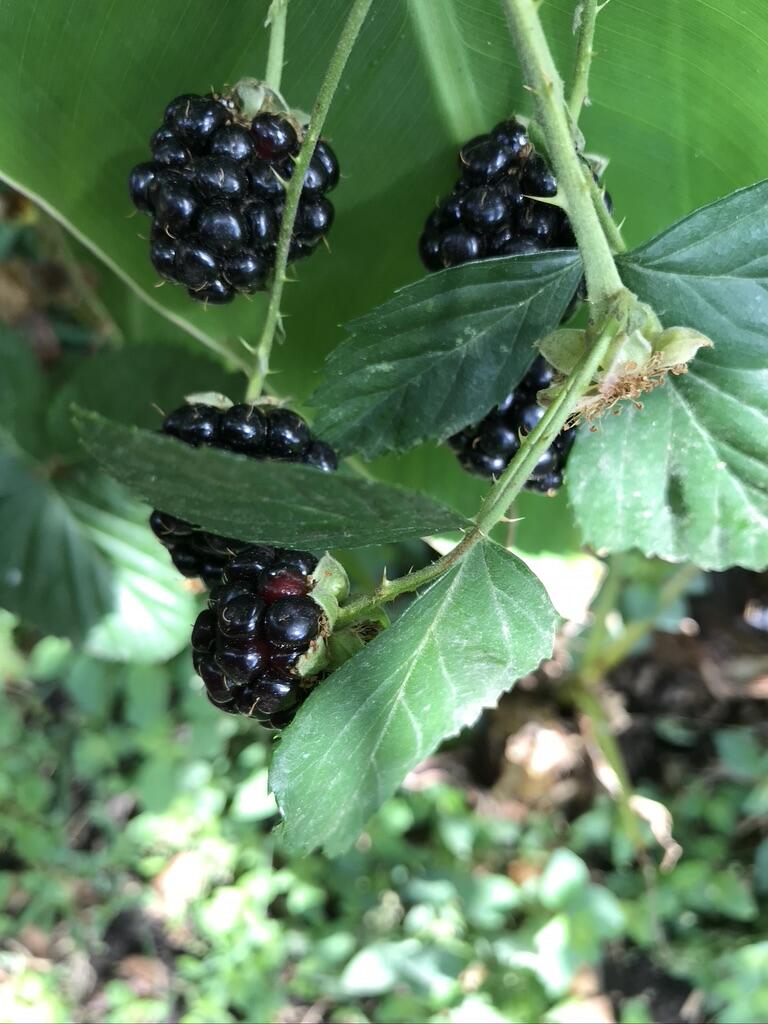
Work makes us human as much as language does. It has as much power to communicate as do the influential works of writers Michael Pollan or Erik Scholsser. In our small home garden in Mexico City, my son Álvaro is ready to harvest his zucchini, green peas and cilantro leaves. A yellow flower has emerged, for he took advantage of the start of Spring when sowing, when the rain is gentler with the seedlings than it is in the Summer. Seasons make renewed sense, something that isn’t obvious to city-folk who see the weather as just an indication of which outfit to wear. “We must remember to weed,” I tell him, for that is also part of gardening and so many things in life, for instance friendships. Maybe by just engaging with an orchard we have already learned something from this pandemic.
Lo que nos enseña un jardín
Por Fernando Clavijo M.

Durante la pandemia mucha gente empezó un huerto casero. Un pequeño gesto que no podía venir en mejor momento, uno en que se vuelve evidente que la alimentación industrializada es parte, si no la raíz, de muchos de nuestros problemas de salud. En México, además, llegó justo con el inicio de la primavera, y para el momento de la redacción de este artículo, ya deberían estar cosechando sus primeras flores de calabaza, ejotes y hojitas de cilantro.
Yo no soy jardinero, y veces me voy por las ramas, pero no tanto que no pueda describir lo que está a la vista, incluso derivar algunas lecciones sencillas. El árbol más alto del jardín de casa de mi mamá en Malinalco es un mamey. Frondoso y con hojas grandes, tiene fruto continuamente. Frutos de distintos tamaños, pegados a la rama, madurando durante todo el año para almacenar la gran cantidad de energía que su carne contiene en forma de grasa y azúcar. Por eso el árbol siempre parece lleno, pero hemos aprendido a cosecharlo un año sí y otro no. Aunque se ve muy grande —toda una institución— requiere muchos cuidados. Primero una virgen, que evitó que los albañiles lo talaran durante la construcción de la casa, hace casi 40 años. Luego, hay que arrancarle las lianas y enredaderas parásito que se le intentan trepar, y por último aligerarlo del peso enorme de sus frutos cuando estos están maduros. Cuando un mamey cae hace un estruendo, y entre las hojas y ramas secas del invierno corren los perros jadeando para lamer el mamey roto y reparten su hueso por otras partes del terreno.
La caída de frutos es una constante. Otro que hace mucho escándalo al caer es el zapote negro. De un árbol mucho más pequeño, pero también con hojas grandes parecidas a las del aguacate, estas bolas verdes son muy duras y pesadas. Pero maduran casi de golpe, y es fácil que la piel se rompa y el azúcar negra que tiene esta fruta se deje invadir por gusanos, que entonces caen con todo y fruta a embarrarse entre las hojas y tierra que hay a los pies del árbol, como lodo. Gracias a estos alimentos y a la multiplicidad de flores, hay muchos insectos, lo que a veces incomoda a visitantes, pero yo les digo que eso es bueno porque atrae a los pájaros.


Como los huertos caseros raramente son lineales u ordenados en sentido convencional, a los pies de este árbol crece la zarzamora, también perenne. Las hileras y las líneas rectas están pensadas para los tractores, no para la escala humana ni para la simbiosis vegetal. Enredado, el arbusto espinoso pica al niño o adulto que va a buscar sus moras para desayunar —a mí me gustan con yogurt—, como un pequeño recordatorio de no recolectar más de lo necesario.
El terreno del que hablo no es muy grande, no llegaría a una cuadra pequeña, pero tiene suficientes árboles de suficiente madurez para darnos fruta todo el año. Esto se lo debemos a mi mamá, que sembró y cuidó este vergel durante 30 años —juntando y podando ramas, cargando los troncos más gruesos con orquídeas, deshierbando— junto con un jardinero de nombre Félix, yo diría que en realidad su amigo. Ambos eran muy estrictos con el cuidado de los árboles y los primeros en mostrarnos el durazno inaugural de la primavera, orgullosos. La relación entre patrón y empleado es tanto más amable, y se aleja de la violencia de la explotación, cuanto más se comparte la satisfacción de un trabajo bien hecho.
Por la mañana tomamos nuestro propio café, que se da a la sombra del mamey-institución y de una buganvilia: arbolitos delgados pero increíblemente productivos. Yo llevo décadas sin tomar otro café. Es un toque amargo, sobre todo cuando lo tuestan un poco de más, pero por eso mismo creo que va tan bien con la leche espumada de un cappuccino. Por la tarde hacemos agua de guanábana—otro fruto que madura con gran rapidez en abril y mayo—y durante un par de semanas, cuando se da el tumbo (un primo del maracuyá) que mi mamá trajo de Santa Cruz de la Sierra, la amazonia boliviana, evocamos su memoria bebiendo un pisco-sour hecho con Singani (que es como el pisco pero mejor, ya que solo se hace de uva moscatel de Alejandría).


Convivimos pues, inmersos en el jardín, y con ello conmemoramos nuestras raíces y también la tierra en la que estamos. Ahora que escribo esto, a principio de época de lluvias, el paisaje no tiene el verde tierno y luminoso de la primavera sino un verde maduro y espeso que oscurece ligeramente el huerto. La lluvia y el viento tumban frutos, hojas y ramas, hojarasca que ha de recolectarse para llevar a la parte baja —cerca de la barda— donde se va juntando para composta. Este es de los mayores milagros de un huerto, ver cómo un montón de hojas, ramas y frutos podridos se van suavizando y mojando hasta que, con ayuda de lombrices, heces de pájaros y otros organismos, se convierten en tierra. Como nos enseña Wendell Berry, la descomposición también es parte de la vida, y da lugar a una tierra rica, oscura y olorosa, que se reparte y devuelve entre los árboles según haga falta. Se me ocurre que así también la sociedad debe regenerarse, deshaciendo y reformando ideas, para de esa manera mantener una cultura viva. Un buen jardín o granja ha de contener el ciclo completo de nacimiento, maduración, muerte y decaimiento para ser un sistema saludable.
Aunque sea completo, no hay jardín aislado. Cuando no es época de lluvias regamos gracias al apantle que atraviesa el terreno, y que se nutre de los ríos subterráneos que vienen de los muchos cerros que rodean Malinalco. Esto nos ha permitido algo que parece ser ineludible de la agricultura a pequeña escala: pertenecer a la comunidad. Hay que asistir a las juntas con los dueños de terrenos cercanos, aguas arriba y aguas abajo, para acordar días y horarios por los que dejaremos pasar el agua. Hay que verificar que nadie la acapare (para llenar su alberca o regar su campo de golf), ni la contamine (con deshechos, fertilizantes o herbicidas): aprender a ser un buen vecino. Cuánto mejoraría nuestro país si todos practicásemos buena vecindad.
Un pequeño hábito realizado durante muchos años se convierte en virtud. Lo que el jardín nos enseña se vuelve parte de nosotros, y con ello permea nuestra vida en forma de actitud. Ya no vemos a la lluvia como algo que entorpece el tráfico, ni al sol como un accesorio para el bronceado. Los bichos dejan de ser una molestia que acude a la luz por las noches y que hay que aplastar. La comida —limas, lechugas y cebollitas frescas— se vuelve preciosa y no necesita disfrazarse con aderezos para disfrutar su sabor. Toda nuestra relación con el ciclo de la alimentación es sencillamente más sana cuando es natural y orgánica. Pero no solo me refiero a lo orgánico en el sentido que esta palabra conlleva en las etiquetas de los supermercados especializados (es decir “sin químicos”), sino orgánica porque cada elemento del ciclo constituye una parte integral y armoniosa del todo, incluyendo la visión de nuestro papel en la naturaleza.
En la carretera de regreso a la ciudad traigo la camioneta cargada de fruta y hortalizas. Usando el motor para frenar ante las curvas—y así aumentar tracción, ahorrar gasolina, frenos y llantas—pienso que la enseñanza del jardín va más allá de la alimentación. Involucrarme con el suelo cambia mi manera de conducirme y mi relación con el mundo, tanto o más que si me manifestase con pancartas contra la agroindustria o el monocultivo, pues el cambio más importante es el de la conciencia.

El trabajo nos hace humanos tanto como el lenguaje, y puede transmitir más de lo que comunican las palabras de libros tan influyentes como los de Michael Pollan y Eric Schlosser. En nuestro patiecito en el D.F. Álvaro, mi hijo, ha empezado un huerto y viene pensando en sus calabacitas, ejotes y hojas de cilantro. Al llegar se da cuenta que ha salido una flor amarilla, gracias a que lo plantó con las primeras lluvias de la primavera —menos recias que las del verano y que no estropean las plántulas—con lo cual las estaciones cobran sentido, algo que ya no es obvio para la mayoría citadina que considera al clima como un indicativo de qué atuendo ponerse. “Hay que quitar las hierbas invasoras”, le recuerdo a Álvaro, pues eso también es parte de la jardinería y de tantas otras cosas en la vida, como, por ejemplo, las amistades. Tal vez solo con involucrarnos en un huerto ya hemos empezado a aprender algo de la pandemia.
Fernando Clavijo M. studied at ITAM and Stanford University. He is the author of the hunting memoir Wetlands of Sinaloa, and is currently a food writer for revista Este País and conducts interviews for the Revista de la Universidad de México.
Fernando Clavijo M. estudió en el ITAM en México y la Universidad de Stanford. Es autor del libro cinegético Marismas de Sinaloa, y actualmente es columnista para la revista Este País y productor para la Revista de la Universidad de México.
Related Articles
Editor’s Letter – Eyes on COVID-19
Editor's Letter Documenting Covid-19 It’s been two years, two months and some days since we published Olivia Liendo’s powerful article “With Covid-19, We are All Immigrants.” Relating how friends, family and strangers came together to help her mother in Venezuela...
A Review of The Rebel Scribe: Carleton Beals and the Progressive Challenge to U.S. Policy in Latin America
This is how the adventure of the 25-year-old from Kansas begins: “I began to dream dreams, extravagant dreams. I would stay here in this city of the Aztecs and the Conquistadors ..
A Review of The Capital of Free Women: Race, Legitimacy, and Liberty in Colonial Mexico
Ever since James Lockhart published Spanish Peru in 1968, historians of colonial Latin America have mined the notarial archives to illuminate the daily lives of people who were largely…


